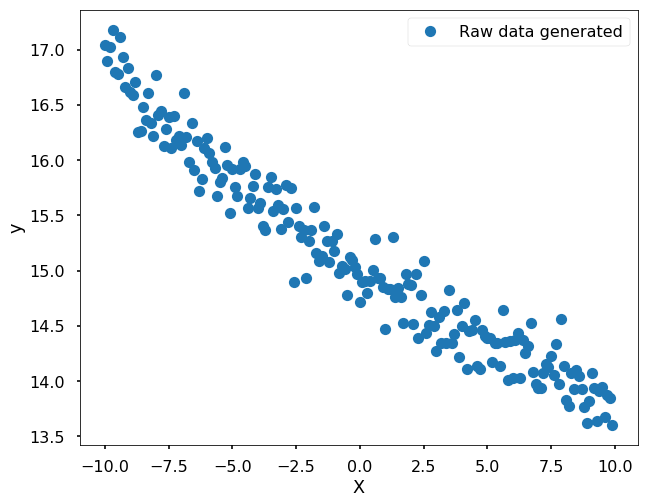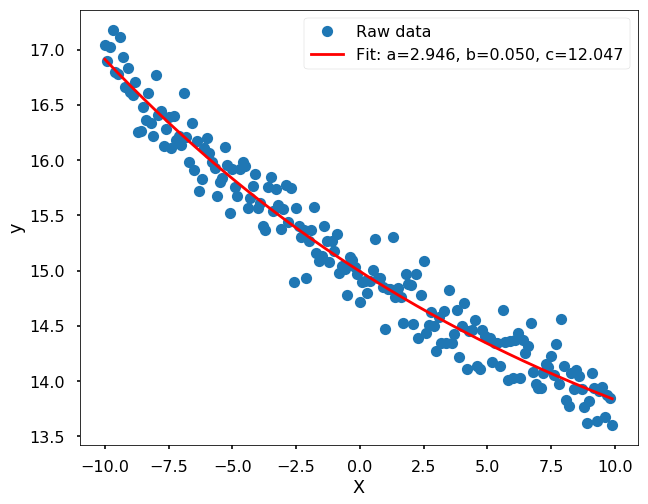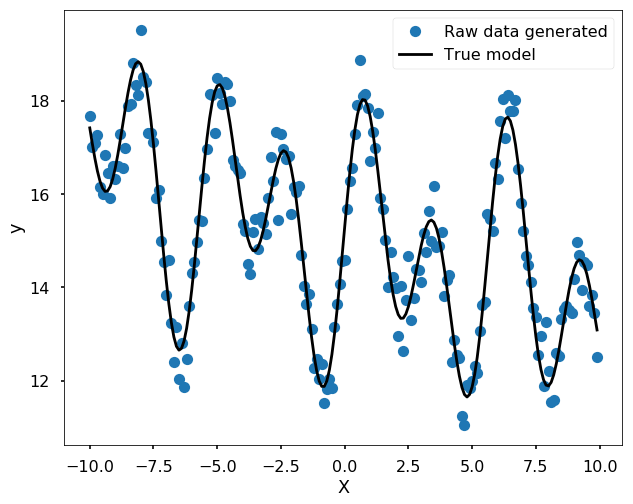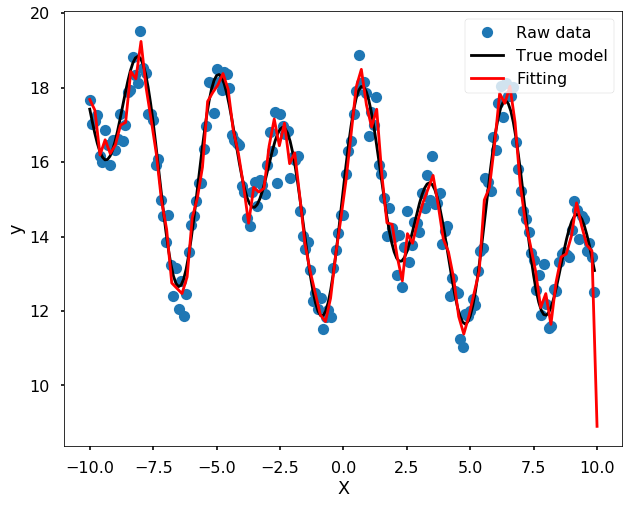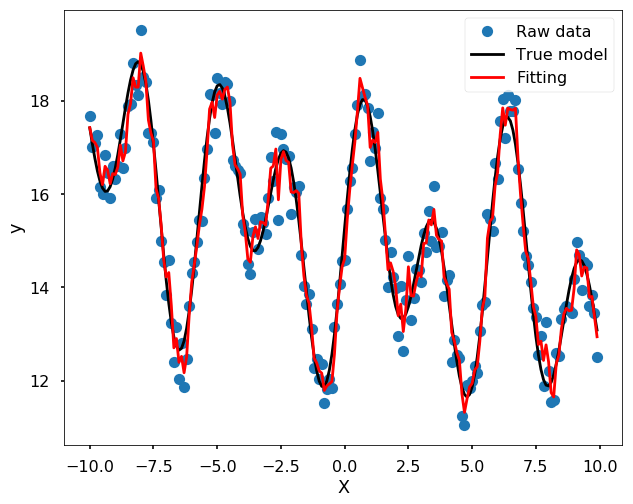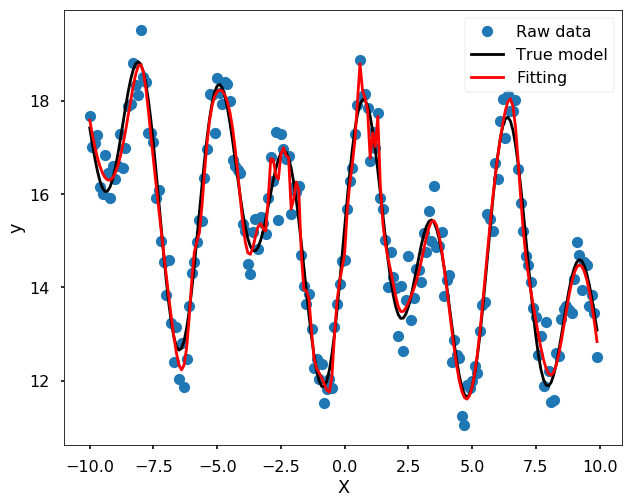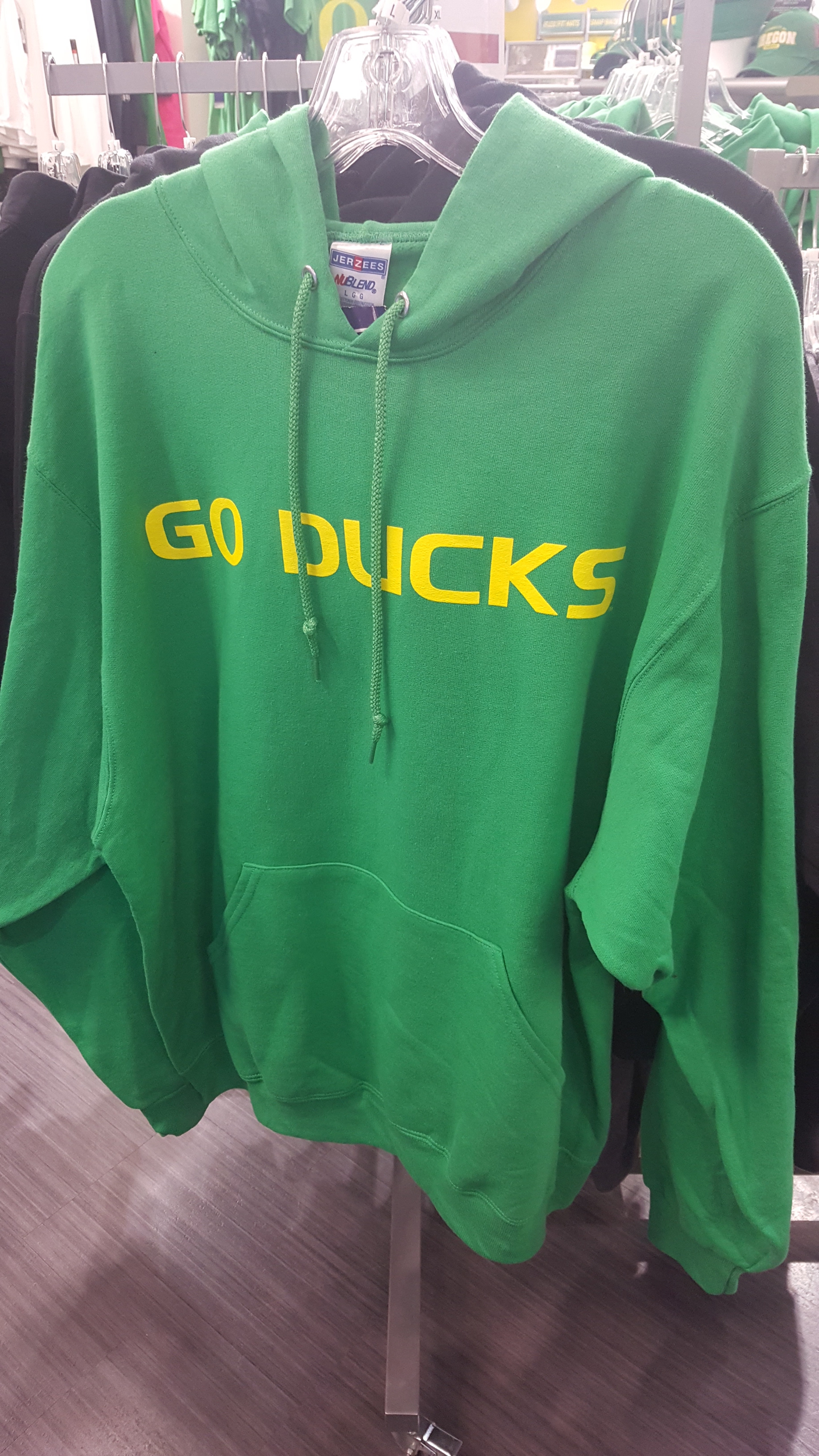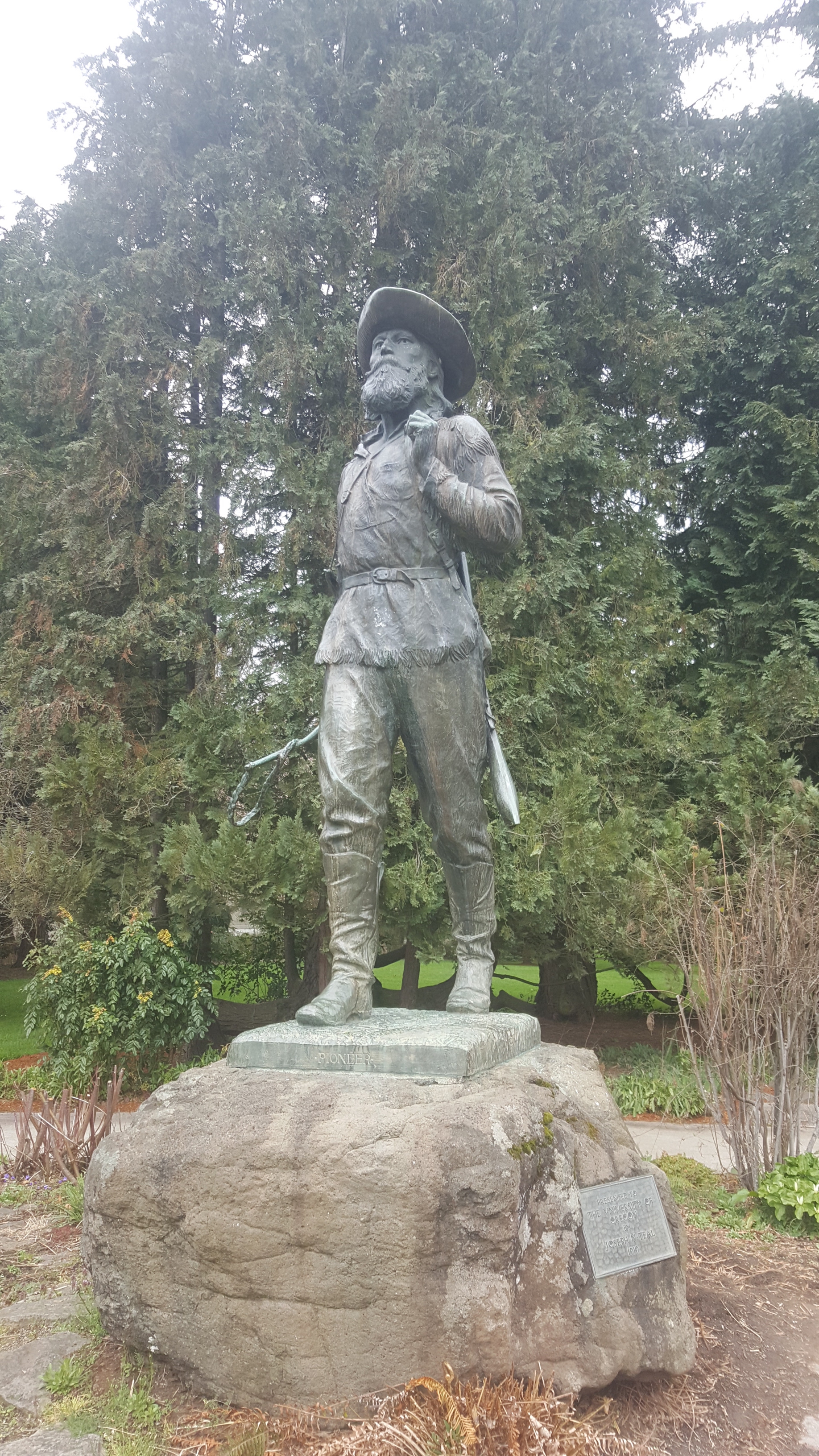Recently I have a friend asking me how to fit a function to some observational data using python. Well, it depends on whether you have a function form in mind. If you have one, then it is easy to do that. But even you don’t know the form of the function you want to fit, you can still do it fairly easy. Here are some examples. You can find all the code on Qingkai’s Github.
import numpy as np
import matplotlib.pyplot as plt
%matplotlib inline
plt.style.use('seaborn-poster')
If you can tell the function form from the data
For example, if I have the following data that actually generated from the function 3*exp(-0.05x) + 12, but with some noise. When we see this dataset, we can tell it might be generated from an exponential function.
np.random.seed(42)
x = np.arange(-10, 10, 0.1)
y = 3 * np.exp(-0.05*x) + 12
y_noise = y + np.random.normal(0, 0.2, size = len(y))
plt.figure(figsize = (10, 8))
plt.plot(x, y_noise, 'o', label = 'Raw data generated')
plt.xlabel('X')
plt.ylabel('y')
plt.legend()
plt.show()
Since we have the function form in mind already, let’s fit the data using scipy
function - curve_fit
from scipy.optimize import curve_fit
def func(x, a, b, c):
return a * np.exp(-b * x) + c
popt, pcov = curve_fit(func, x, y_noise)
plt.figure(figsize = (10, 8))
plt.plot(x, y_noise, 'o',
label='Raw data')
plt.plot(x, func(x, *popt), 'r',
label='Fit: a=%5.3f, b=%5.3f, c=%5.3f' % tuple(popt))
plt.legend()
plt.xlabel('X')
plt.ylabel('y')
plt.show()
More complicated case, you don’t know the funciton form
For a more complicated case that we can not easily guess the form of the function, we could use a Spline to fit the data. For example, we could use
UnivariateSpline.
from scipy.interpolate import UnivariateSpline
np.random.seed(42)
x = np.arange(-10, 10, 0.1)
y = 3 * np.exp(-0.05*x) + 12 + 1.4 * np.sin(1.2*x) + 2.1 * np.sin(-2.2*x + 3)
y_noise = y + np.random.normal(0, 0.5, size = len(y))
plt.figure(figsize = (10, 8))
plt.plot(x, y_noise, 'o', label = 'Raw data generated')
plt.plot(x, y, 'k', label = 'True model')
plt.xlabel('X')
plt.ylabel('y')
plt.legend()
plt.show()
s = UnivariateSpline(x, y_noise, s=15)
xs = np.linspace(-10, 10, 100)
ys = s(xs)
plt.figure(figsize = (10, 8))
plt.plot(x, y_noise, 'o', label = 'Raw data')
plt.plot(x, y, 'k', label = 'True model')
plt.plot(xs, ys, 'r', label = 'Fitting')
plt.xlabel('X')
plt.ylabel('y')
plt.legend(loc = 1)
plt.show()
Of course, you could also use Machine Learning algorithms
Many machine learning algorithms could do the job as well, you could treat this as a regression problem in machine learning, and train some model to fit the data well. I will show you two methods here - Random forest and ANN. I didn’t do any test here, it is only fitting the data and use my sense to choose the parameters to avoid the model too flexible.
Use Random Forest
from sklearn.ensemble import RandomForestRegressor
from sklearn.metrics import mean_squared_error
yfit = RandomForestRegressor(50, random_state=42).fit(x[:, None], y_noise).predict(x[:, None])
plt.figure(figsize = (10,8))
plt.plot(x, y_noise, 'o', label = 'Raw data')
plt.plot(x, y, 'k', label = 'True model')
plt.plot(x, yfit, '-r', label = 'Fitting', zorder = 10)
plt.legend()
plt.xlabel('X')
plt.ylabel('y')
plt.show()
Use ANN
from sklearn.neural_network import MLPRegressor
mlp = MLPRegressor(hidden_layer_sizes=(100,100,100), max_iter = 5000, solver='lbfgs', alpha=0.01, activation = 'tanh', random_state = 8)
yfit = mlp.fit(x[:, None], y_noise).predict(x[:, None])
plt.figure(figsize = (10,8))
plt.plot(x, y_noise, 'o', label = 'Raw data')
plt.plot(x, y, 'k', label = 'True model')
plt.plot(x, yfit, '-r', label = 'Fitting', zorder = 10)
plt.legend()
plt.xlabel('X')
plt.ylabel('y')
plt.show()


